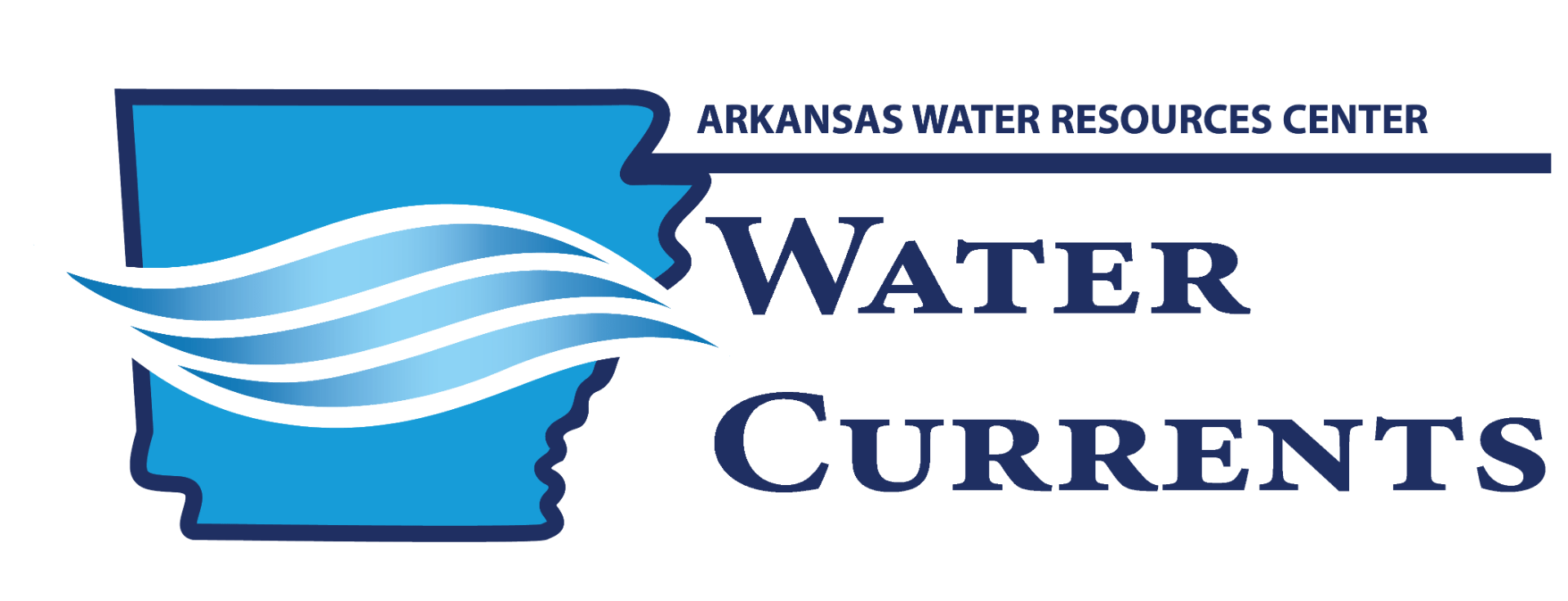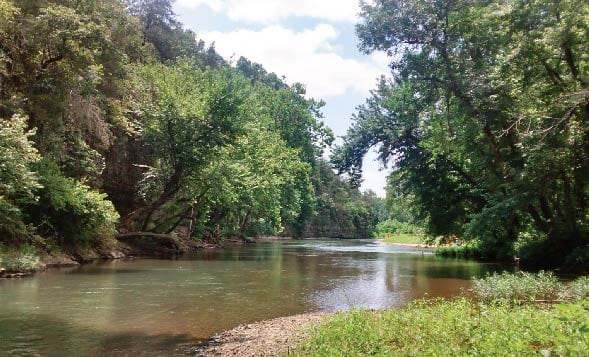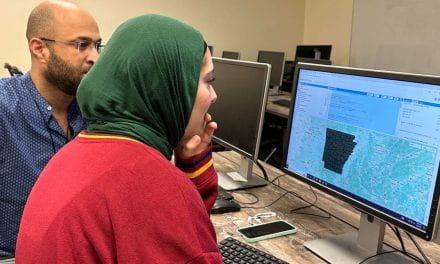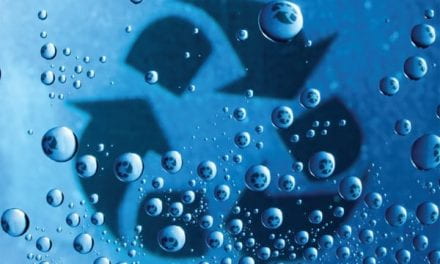
Report Shows Water-Quality Trends in Northwest Arkansas
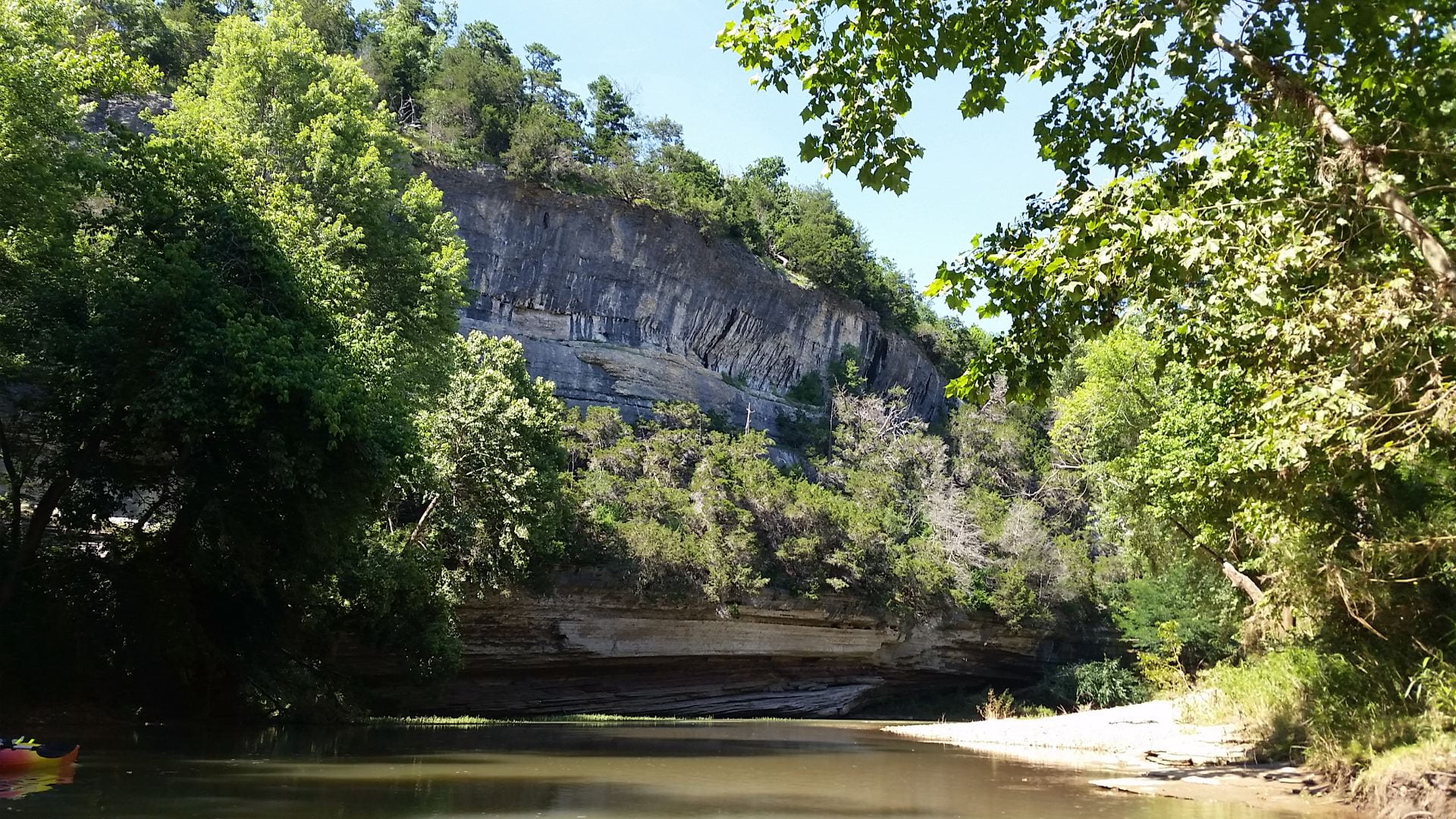
Have you ever wondered what the water quality is like in local streams and rivers in Northwest Arkansas? Is it getting better, or getting worse? At the Arkansas Water Resources Center (AWRC) we have been monitoring water quality at 15 sites in the Upper Illinois River Watershed and the Upper White River Basin for many years in order to answer that question.
“We are fortunate to have generally good water quality in this region,” says AWRC director Brian Haggard. “What’s great is that we can use these data to show where water quality is changing,” he added.
Long-term water-quality monitoring is paramount to our understanding of how water quality might be changing over time, with changes in land use, management practices, and climate change. The AWRC collected water samples almost every week for the last ten years at many of these sites. That comes to almost 5,000 water samples collected for this project, with each sample being tested for multiple parameters including nutrients, sediments, chloride, and sulfate.
There is a lot of good news reflected in these data, namely that water quality is improving at all 15 sites for many of the parameters measured. On the other hand, water quality is getting worse for some of the parameters at 10 of the 15 monitoring sites.
“One of the most valuable things water quality monitoring can provide is data to show success stories,” says Tony Ramick, the fiscal grants manager with the Arkansas Natural Resources Commission (ANRC).
Indeed, this expansive dataset shows the effect of improved waste water treatment processes at Osage and Spring Creeks, where both nitrogen and phosphorus have been decreasing over time. These changes, plus nutrient management policies in the Illinois River Watershed have resulted in improved water quality in the Illinois River as well.
Water quality in Beaver Lake is important because it is the drinking water supply for most of Northwest Arkansas. Beaver Lake is formed by the White River, and there are two other major tributaries that flow into the lake – War Eagle Creek and Richland Creek. Nitrogen concentrations at the White River and War Eagle Creek have been decreasing, while phosphorus has been stable. Water quality at Richland Creek is improving in terms of phosphorus, but nitrogen concentrations have been increasing over time.
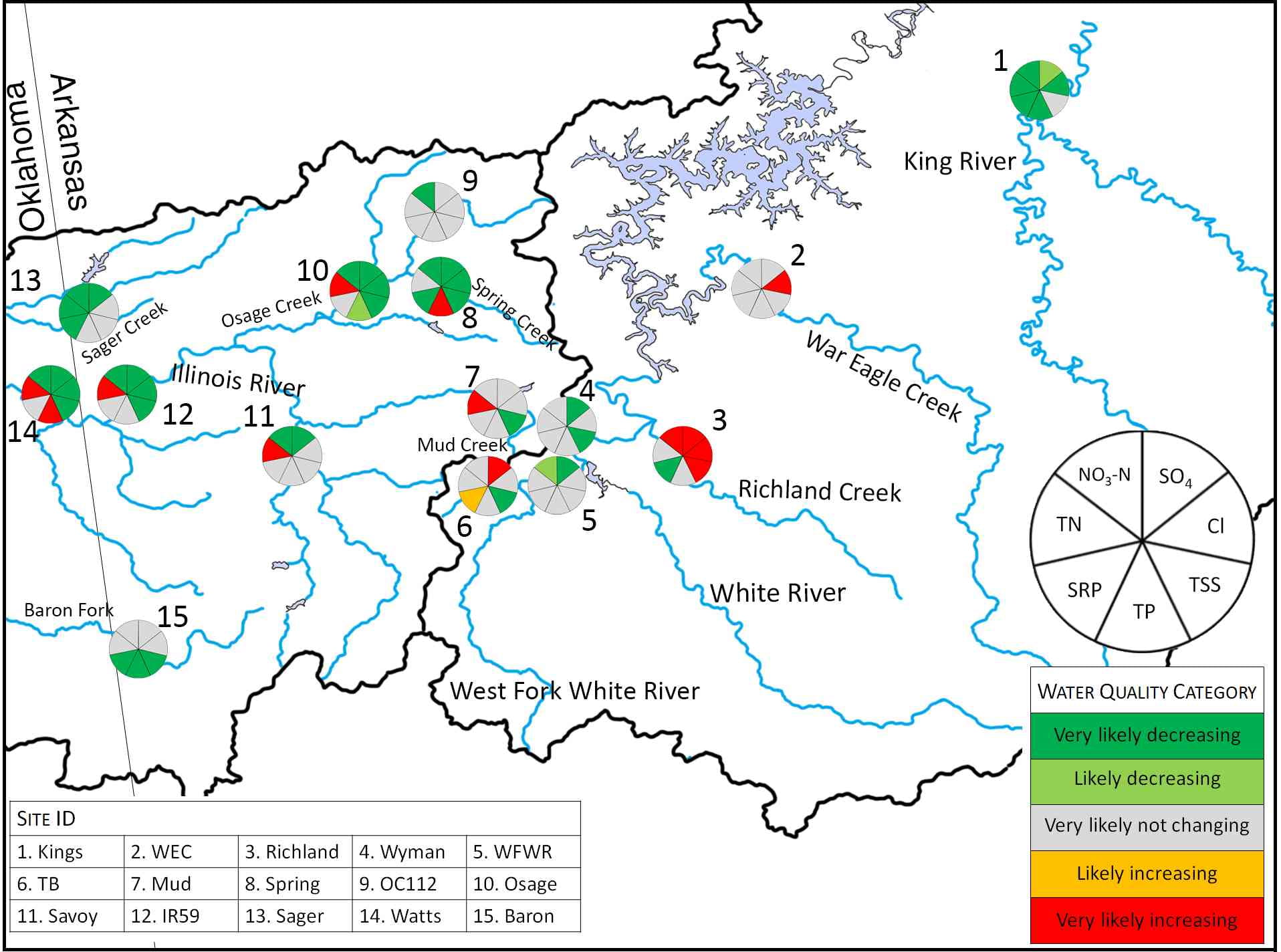
Map of the UWRB and UIRW in Arkansas showing water-quality trends for several parameters. SO4=Sulfate; Cl=Chloride; TSS=Total Suspended Solids; TP=Total Phosphorus; SRP=Soluble Reactive Phosphorus; TN=Total Nitrogen; NO3-N=Nitrate.
This large and valuable dataset would not be available if not for the investment from the Arkansas Natural Resources Commission and the importance they place on water-quality monitoring. Trend analysis also relies on daily flow data, which the United States Geological Survey makes available through their stream gage program, funded by various federal, state and municipal partners.
There is a lot more information to be found in the full report, Constituent Loads and Trends in the Upper Illinois River Watershed and Upper White River Basin. That report, along with all the data used to evaluate trends can be found on the AWRC publications website.
